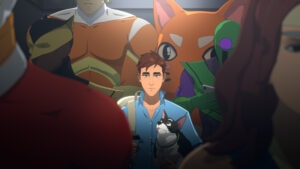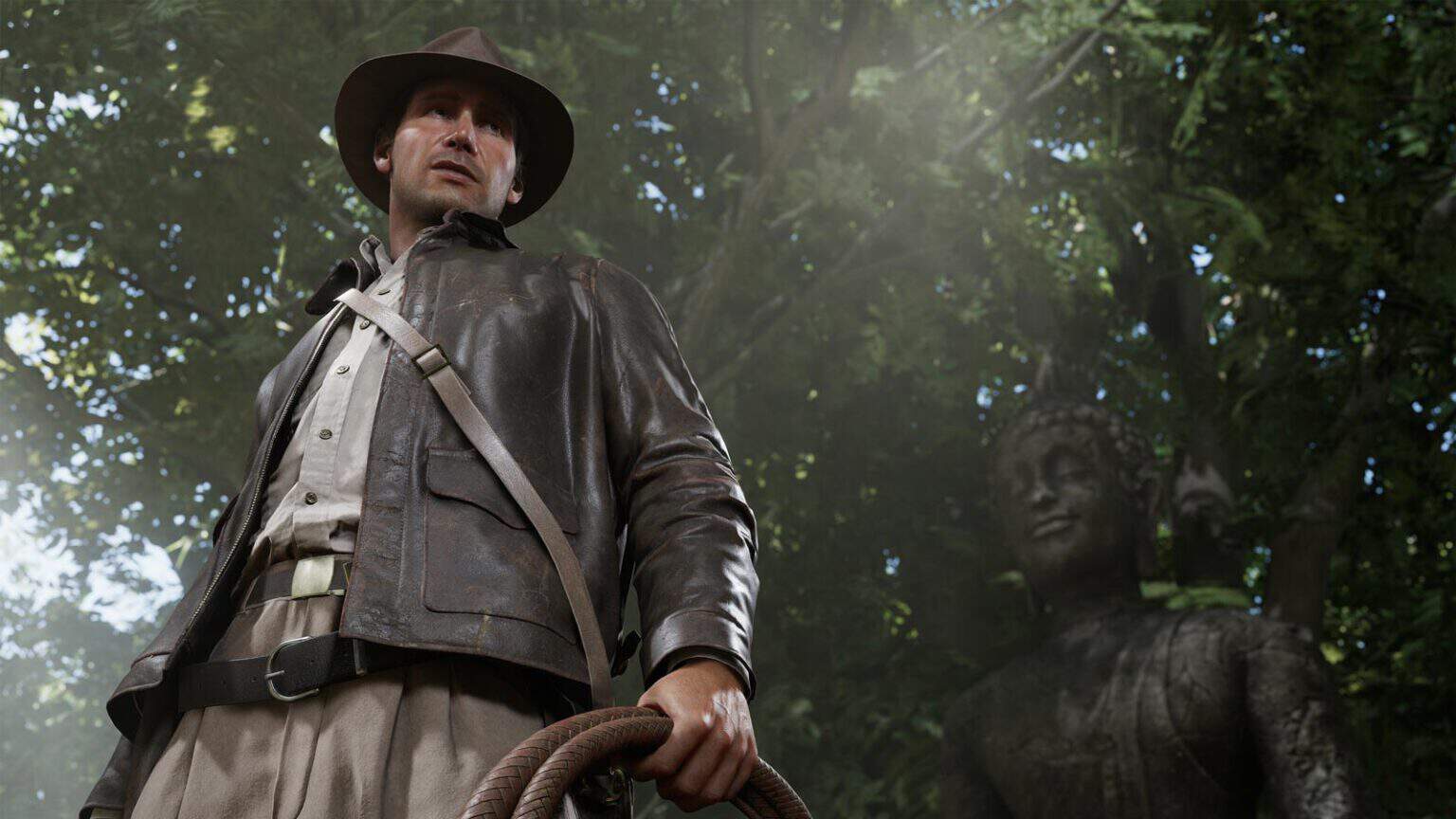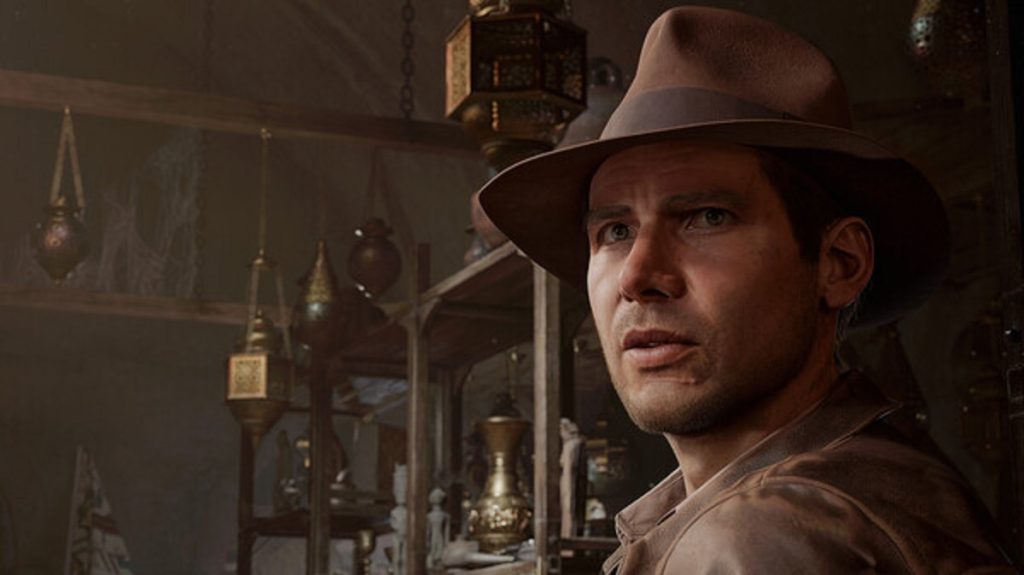When someone mentions Indiana Jones, four names immediately spring to mind: Steven Spielberg, John Williams, George Lucas, and Harrison Ford. Spielberg’s masterful direction, Williams’ iconic score, Lucas’ compelling storytelling, and Ford’s charismatic performance combined to bring the franchise critical acclaim. It’s simply not the same when one of them is missing, which is why James Mangold’s Dial of Destiny was arguably the weakest entry in the series.
Despite Dial of Destiny‘s horrible reception from the critics, Indiana Jones and the Great Circle showed great promise when it was announced by Bethesda in 2021. MachineGames’ decision to develop the game in a first-person view perspective made me feel a bit uneasy. It made me ask: how can an action-adventure game that focuses on puzzles, platforming, and sightseeing be great in first-person mode? Naughty Dog’s Uncharted franchise is the ultimate benchmark here, and it seems that the decision to make Indiana Jones and the Great Circle not third-person would do a massive disservice to the I.P.
Despite my early criticism and doubts, there’s something right about the decision to make Indiana Jones and the Great Circle in first-person when I started playing the game a few days ago. MachineGames has cleverly circumvented the potential pitfalls associated with this approach. My experience with the game has been a mixed bag, but overall it’s a decent, thrilling, and enjoyable adventure, reminiscent of Uncharted 4: A Thief’s End.
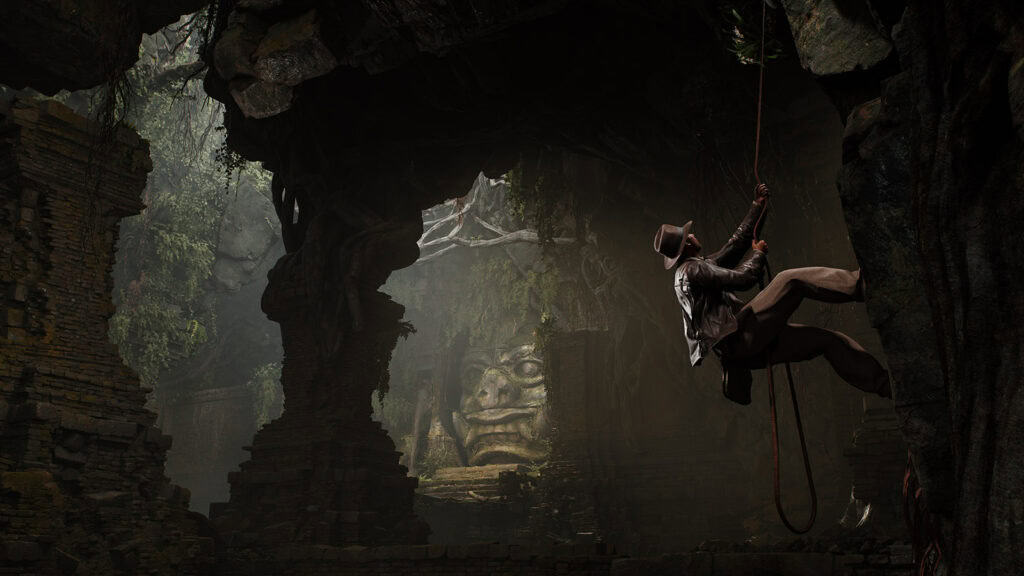
The story is set between Raiders of the Lost Ark and The Last Crusade, with our charming, courageous, and inquisitive archaeologist, Dr. Indiana Jones, embarking on a quest to unravel the mystery of the Great Circle. The game begins with a brief flashback to the events of the first film, introducing basic mechanics like swinging with the whip and interacting with the environment. While not an exhaustive tutorial, the game effectively guides you through its mechanics as you progress.
In most cases, it’s the most classic Indiana Jones plot you’ll ever get. The world that surrounds Dr. Jones is always filled with exciting adventures. Either he gets into a nasty conflict with China’s own mafia gang or finds himself between the crosshairs of Nazi soldiers in a quest to find the Holy Grail, The Great Circle still places him in the same situation: a quest to uncover mysteries of an ancient power that fascists eagerly wants to get their hands on for greater power.
Indiana Jones and the Great Circle plays it too safe which keeps the narrative decent enough for the most part as an Indiana Jones story, but it sometimes makes you wonder if the writers didn’t want to take some risks to keep the plot even more exciting and captivating.
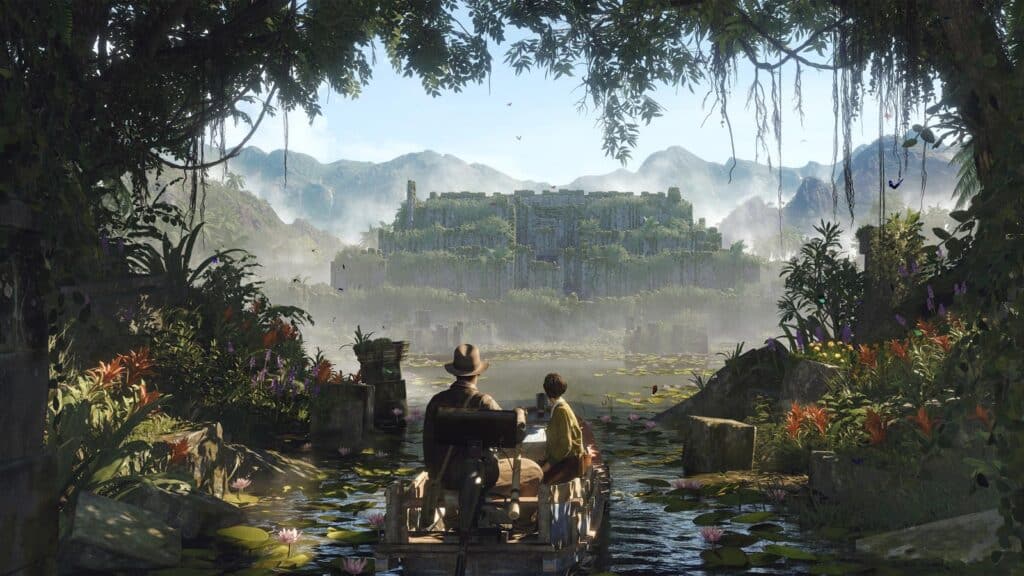
While the writing is decent enough to keep you engaged in The Great Circle, it’s where you explore what matters most in action-adventure games like this, especially for a franchise known for its diverse locations. Locations should have nuances that make it exciting to explore, to keep you distracted from playing the main story; and the game surely has open areas for you to unravel and it’s the highlight of the game. From uncovering the mysteries in the Vatican to fending off scorpions in tombs of the pyramids in Gizeh, The Great Circle doesn’t fall short in quenching your thirst for adventure.
As you freely explore these locations, especially when you find a disguise so you can easily slip through enemy-controlled areas, there are interesting side activities you can take in the form of Mysteries and Field Work which you can find in Indy’s handy-dandy journal. While both in-game activities are technically the same, their focus differs heavily. Mysteries are more local, heavily inspired by its area where challenging puzzles and brainteasers are the key points. While Field Work, on the other hand, serves as your actual side-quests where it adds a lot of value to the main narrative.
MachineGames has impressively done its research to add more historical accuracy and authenticity to the locations present in Indiana Jones and the Great Circle. You’ll have a great time discovering historical facts such as newspapers that talked about Japan’s bombing raid in Nantao, China in 1937 and a few more. You’re rewarded when you explore every nook and cranny of the area.
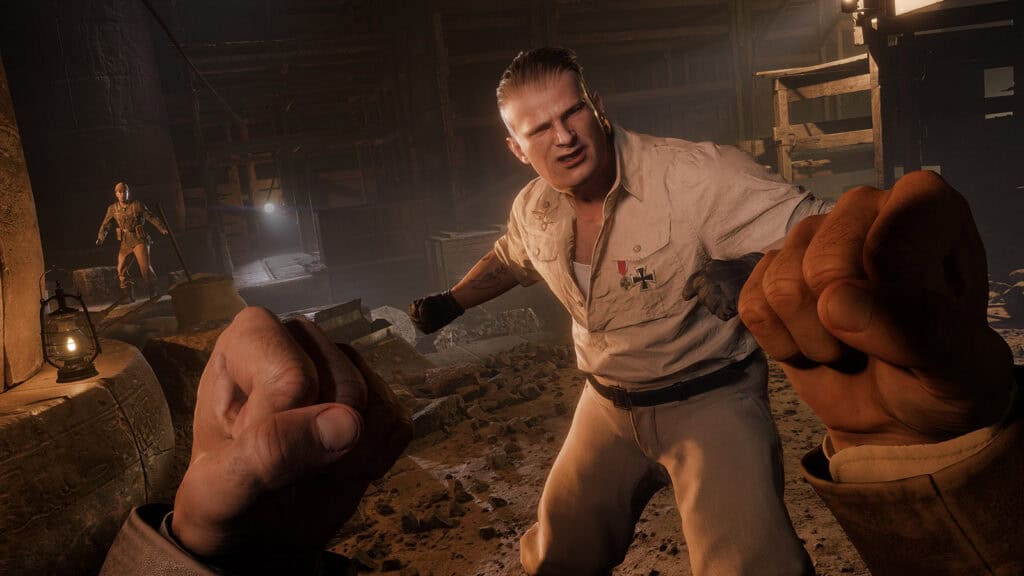
Given MachineGames’ reputation for the Wolfenstein series, the combat in Indiana Jones and the Great Circle might initially seem underwhelming. Stealth is the primary focus as you’re encouraged to avoid engaging enemies in a gunfight due to how vulnerable Dr. Jones is. Most of the time you’ll often rely on your whip to trip enemies, creating opportunities for a quick takedown. Even more so, you’ll also find yourself hiding behind crates, throwing bottles to lure enemies away, walls, and going around corners just to avoid getting caught. You can bring enemies down by grabbing anything from broomsticks to sledgehammers, however, the noise it makes will alert nearby enemies within a few meters. It may sound like it’s boring and slow, but that’s the entire nature of every Indiana Jones film — you infiltrate and make sure you don’t get caught.
That doesn’t mean you can’t use your gun in the entire game though. You have the freedom to do whatever you want. You can go guns blazing if you’re confident enough to survive. Firing guns will alert an entire compound of Nazi soldiers and a few more outside the area too, bringing more enemies to where you are. It took me about 7 hours into the game before I finally fired Indy’s pistol, and it felt good despite knowing the scarcity of ammo in the game.
MachineGames formula in shooters shines when you have a gun and start shooting. Realizing that, I decided to go all-out in a gunfight in the snowy mountains of the Himalayas, picking up weapon after weapon as every time I finish an entire clip Indy drops the gun, leaving me to look for another within the area. This is when the game starts to become enjoyable and exciting simultaneously as you’re not immediately punished with a “you failed” or “you got caught” screen and it brings you back to a recent checkpoint. With my experience in first-person shooter games on consoles, surviving in a gunfight feels natural already, and taking out a room full of Nazi scumbags knowing that your character is fragile felt satisfyingly amazing.
As a studio with a strong portfolio of first-person shooters and incredible action-packed set pieces like MachineGames, it clearly shows that there were obvious limitations that made the game’s overall combat bland; however, the freedom you have in Indiana Jones and the Great Circle is a gesture of goodwill that reminds you you can still fight with guns, and when you decide that you do, you’ll have a great time.
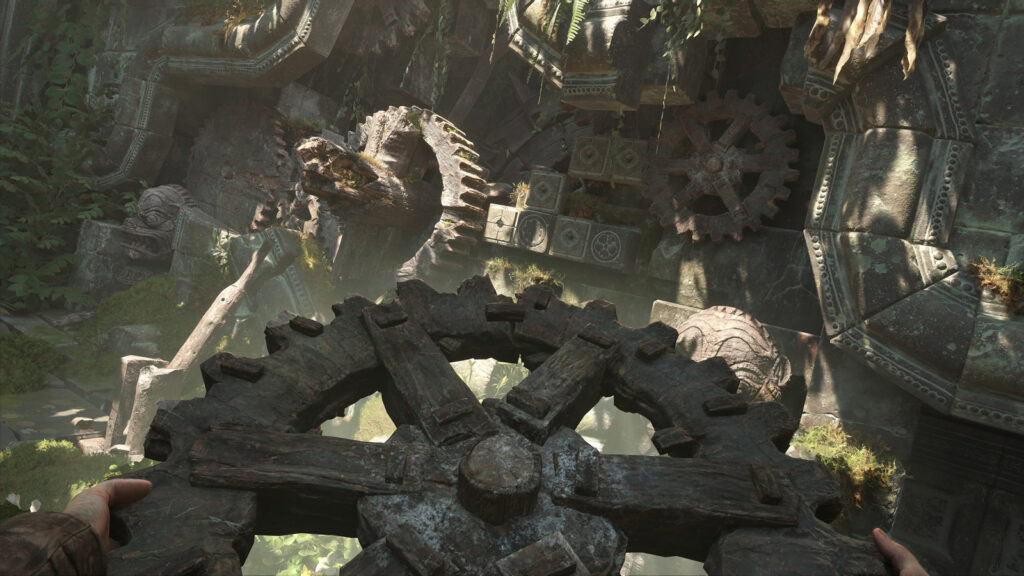
When it’s an Indiana Jones game, you expect to solve fascinating puzzles like the ones you encounter in Tomb Raider and Uncharted games. Indiana Jones and the Great Circle is filled with engaging catacombs, tombs, and pyramids with puzzles, however, they’re woefully easy despite setting the puzzle difficulty to the highest possible setting.
Yes, there might be some Field Work and Mysteries activities that test your mental capacity like having only four blue units with each move once and capturing all red units in Mak-Yek, a two-player boardgame that’s almost like chess mainly played in Thailand and Malaysia; but most of The Great Circle‘s puzzles are based on pure logic and doesn’t put you in a difficult spot like solving riddles or time-bound death traps. You can easily solve them in just a minute or two and it doesn’t go beyond that in my experience.
I tried to understand the decision behind this, and it’s probably because MachineGames targets a market full of casual players who may just want to have fun, especially when they don’t consume a lot of action-adventure games filled with mind-boggling puzzles. Sure, some of the puzzles may prove difficult for others, but for a person like me who’s a sucker for puzzle-filled action-adventure games, it makes the entire experience uninspiring when compared to Tomb Raider and Uncharted.
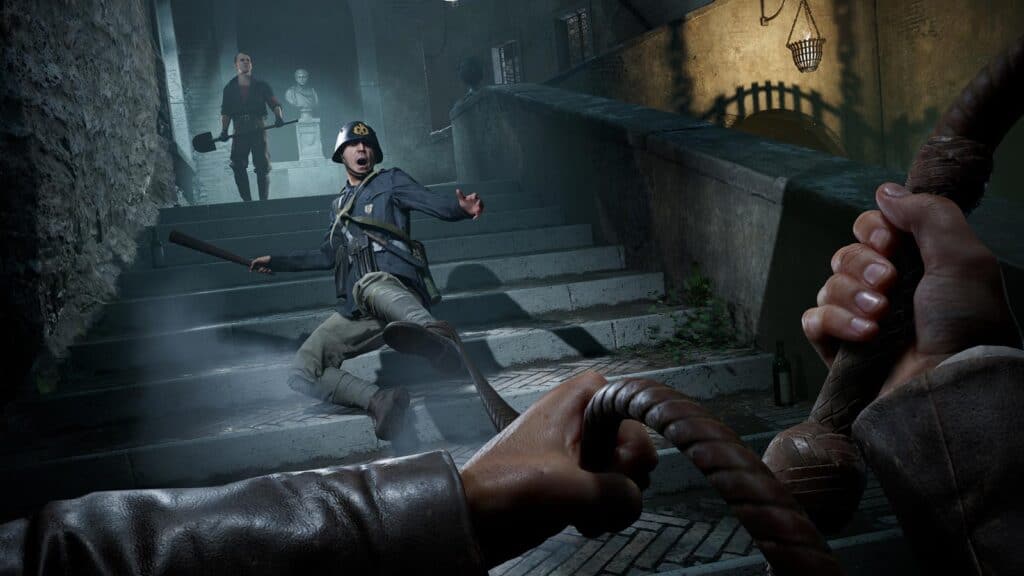
Upgrading core abilities are in the form of Adventure Books. It’s a refreshing take on character progression as you don’t simply just gain experience points to level up. These books improve Indy’s survivability, combat effectiveness, health and stamina regen, and item capacity. Exploration is incentivized when players explore, and it adds meaning for players who love to stray away from the main path.
I find adding small details that enhance the player’s experience in first-person games to be a great thing, much like in the case of Adventure Books. In The Great Circle, there is no minimap. Instead, you’ll need to find and consult local maps to navigate your adventures. This requires you to literally lower your camera view to fully see the entire map, adding to the realism and value of the game’s first-person perspective. You’ll also find yourself constantly opening Indy’s journal to review clues captured with your camera or simply to check your current location. These small touches greatly contribute a lot to the player’s experience.
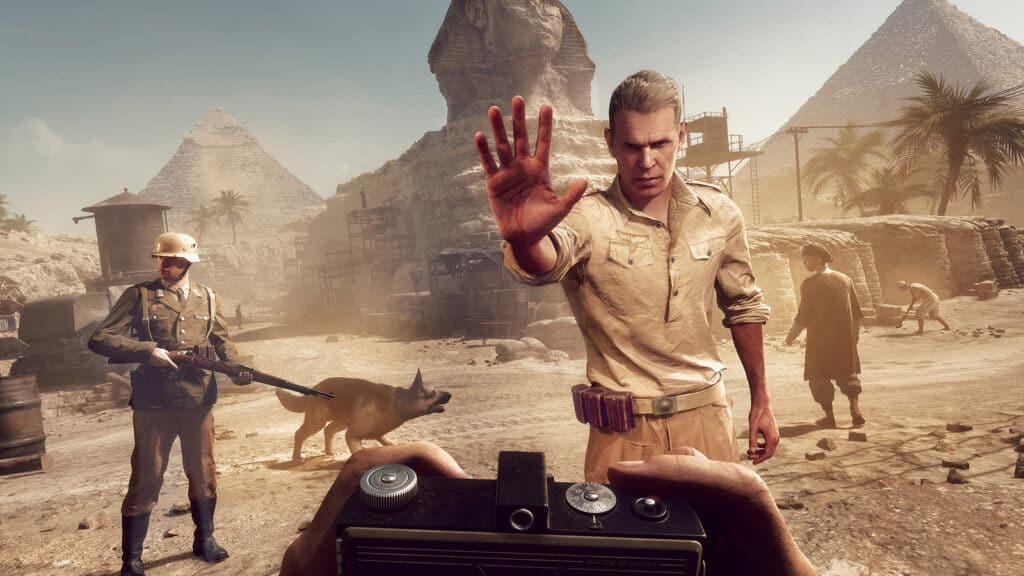
When it comes to visual fidelity, Indiana Jones and the Great Circle is a stunning looking game. From meticulously rendered character models to breathtakingly detailed historical locations, every visual element is captivating especially that the game is in a first-person perspective. Adding to the great visuals present in the game is the impressive masterful soundtrack composed by Gordy Haab. His score perfectly captures the spirit of the Indiana Jones franchise, seamlessly blending action sequences with emotional moments, akin to the iconic compositions by John Williams.
Performance matters in PC games, and with Bethesda’s track record, it’s unsurprising that some of their PC releases are launched in a poor state. I could not entirely say the same thing for Indiana Jones and the Great Circle. While its frames per second (FPS) is consistent throughout, ranging from 80-110 FPS, but mostly 80 FPS average, the overall performance of the game still lacks a bit of polish. There are noticeable frame pacing issues during in-engine cutscenes. The frequent freezing during auto-saves is also annoying despite using the high-end WD_Black 1TB SN850X SSD to run the game.
PC gaming rig used to review Indiana Jones and the Great Circle:
| Processor | Intel Core i9-12900KF |
| Video Card | ASUS ROG Strix 4090 |
| Memory | 64 GB DDR5 (2×32 GB) 4800Mhz |
| Storage | WD_Black SN850X 1TB SSD |
| Operating System | Windows 11 Pro |
| Resolution | 2560×1440 (capped at 120Hz refresh rate) |
Animations during hands-to-hand combat also look janky. You’ll also notice non-player characters move sideways in the background during in-engine scenes. There are also times when NPCs just clip away, or see unusual movements. One of my biggest gripes is when the game abruptly shifts from first-person to third-person view during short swing distances which I find a bit distracting at times.
Despite my gripes on sudden shifts to third-person, some animation bugs and glitches, and meager optimization on PC, Indiana Jones and the Great Circle shows a lot of respect to its source material. With its incredible voice-over team especially Troy Baker’s amazing performance and portrayal of Indiana Jones, the stunning musical score that captures the essence of John Williams’ work, the staggering locations, and the adequate story, it’s an authentic Indiana Jones adventure you’ll surely enjoy.
A PC review copy was provided to us for review by the publisher.
Indiana Jones and the Great Circle
Indiana Jones and the Great Circle captures the heart of franchise with its immersive first-person exploration, stunning visuals, and remarkable performance of its voice-over cast, notably Troy Baker, despite its technical flaws and weak combat element.
The Good
- Remarkable voice-over performance
- Undeniable one of the best looking games
- Authentic historical sites and locations
- A classic Indiana Jones adventure filled with humor
The Bad
- Lacks a bit of polish; a few noticeable glitches
- Sudden shifts to third-person in just short sequences
- Weak Combat Elements

